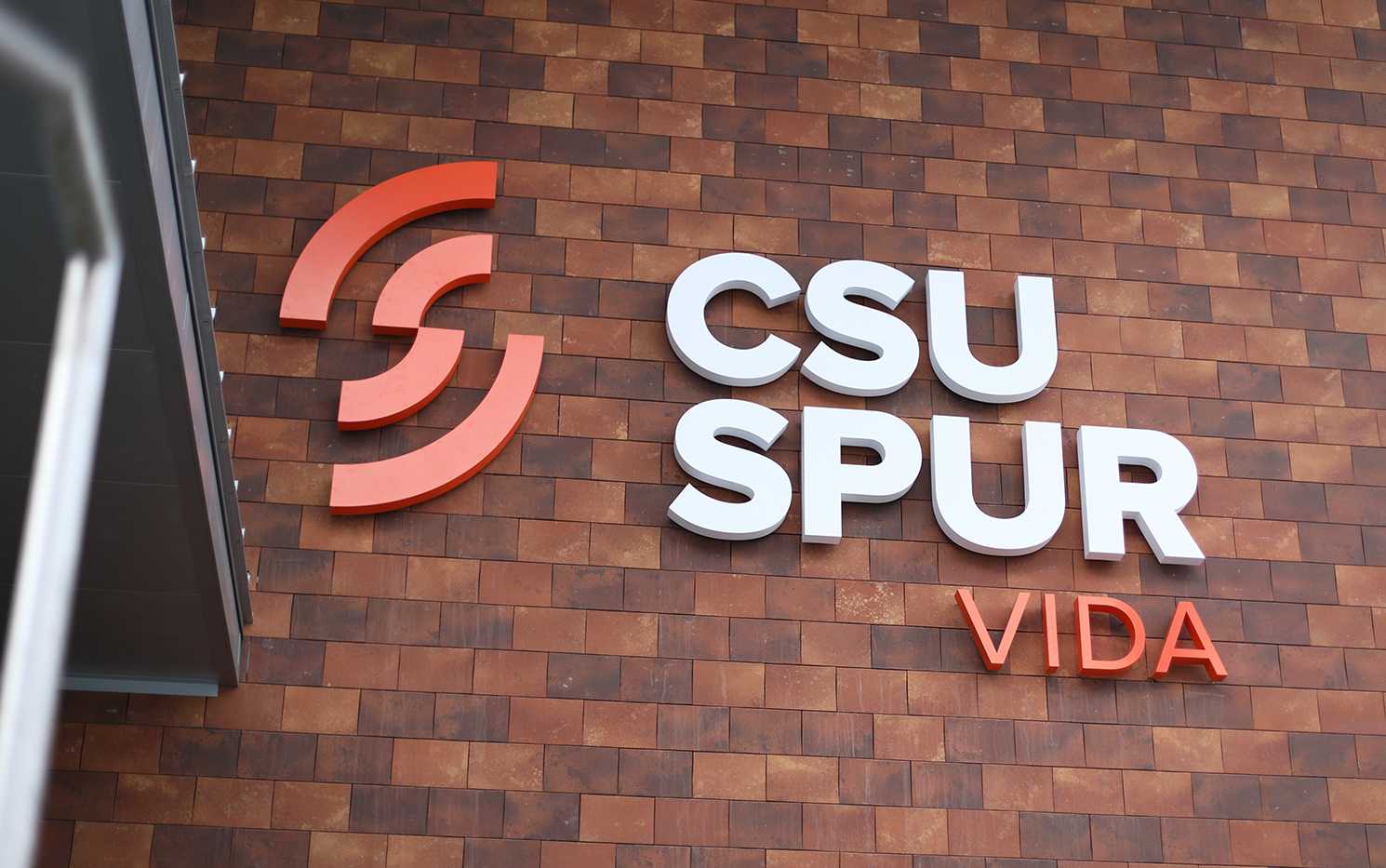Colorado State: Always an ag school at heart
May 1, 2022
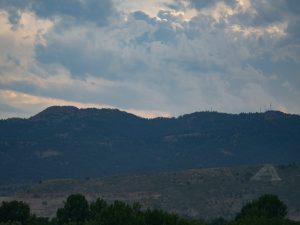
Just about any kid in Fort Collins has — at least once — found themselves asking “Why is there a giant ‘A’ on that hill?” at some point or another.
The explanation at its most basic goes somewhat like this: “Well, the Rams used to be the Aggies, because they were an A&M school — that means agricultural and mechanical. We have the ‘A’ to remember that.” And so the Aggies and their orange live on even as the town paints itself in green and gold.
The legacy of Colorado State University as a land-grant institution and an agricultural school is much more complex, however, and it still grows today. That’s where CSU Spur comes in.

Collegian | Serena Bettis
Colorado State University System Chancellor Tony Frank speaks about the impetus behind the CSU Spur campus at the ribbon-cutting ceremony of the first building, Vida Jan. 7. “This is a project for all of Colorado,” Frank said.
‘A place for everybody’: Understanding CSU Spur, the new Denver campus
Ren Wadsworth
In January, the Colorado State University System opened the first of three buildings on the CSU Spur campus, the System’s venture into the state capital.
CSU Spur is — and will become — a lot of different things to a lot of different people, but ultimately, it’s an educational hub that bridges the divide between Colorado’s rural and urban issues.

“The thing that is most important for us to be sure that the surrounding communities in Denver know is that this is really a place for everybody,” said Jocelyn Hittle, assistant vice chancellor for the CSU Spur campus and special projects. “So we want to welcome all kinds of learners. We want kids and families in this space; we want people to really feel welcome.”
Hittle said what the CSU community needs to know about Spur is similar.
“That this is a place for you,” Hittle said. “So faculty, staff, students from all of the System’s institutions have a role to play at Spur, and we want to be thinking creatively and collaboratively about how Spur can help to support, expand, elevate the work that people are already doing and offer new opportunities because it is intended to be a new space.”
Located at 4817 National Western Drive in Denver, Spur sits next to the National Western Complex between the Globeville and Elyria-Swansea neighborhoods. It is completely free and open to the public Monday through Saturday from 9 a.m. to 5 p.m.
The Spur website lists instructions for access via car, public transportation or on foot, and there is free parking for visitors. Due to continuing construction of both the Spur campus and the new National Western Complex, access routes may shift, so it’s best to check the website for updates before visiting.
Once visitors arrive, they can look forward to an interesting and educational experience.
“(It’s) a hard concept to describe, what we’re trying to do, because there’s really nothing like it,” Assistant Vice Chancellor for External Relations Tiana Kennedy said. “And so we talk about it in a way where it’s a little bit museum, it’s a little bit like (an) animal hospital — … the intention really is for it to be a place where there’s a ton to learn, but it’s also fun and engaging.”
“We want to spur your imagination, spur innovation within this space, spur people’s curiosity.” –Tiana Kennedy, assistant vice chancellor for external relations
CSU Spur consists of three buildings: Vida, Terra and Hydro. Vida opened in January 2022, and Kennedy said the Terra building should open in June 2022 with the Hydro building following in January 2023.
These are later dates than the System originally planned, as Kennedy said the construction is on schedule, but they determined they need more time to set up exhibits and programming between the completion of construction and opening to the public.
The campus theme centers around food, water and health, with each building focused on one of those topics.
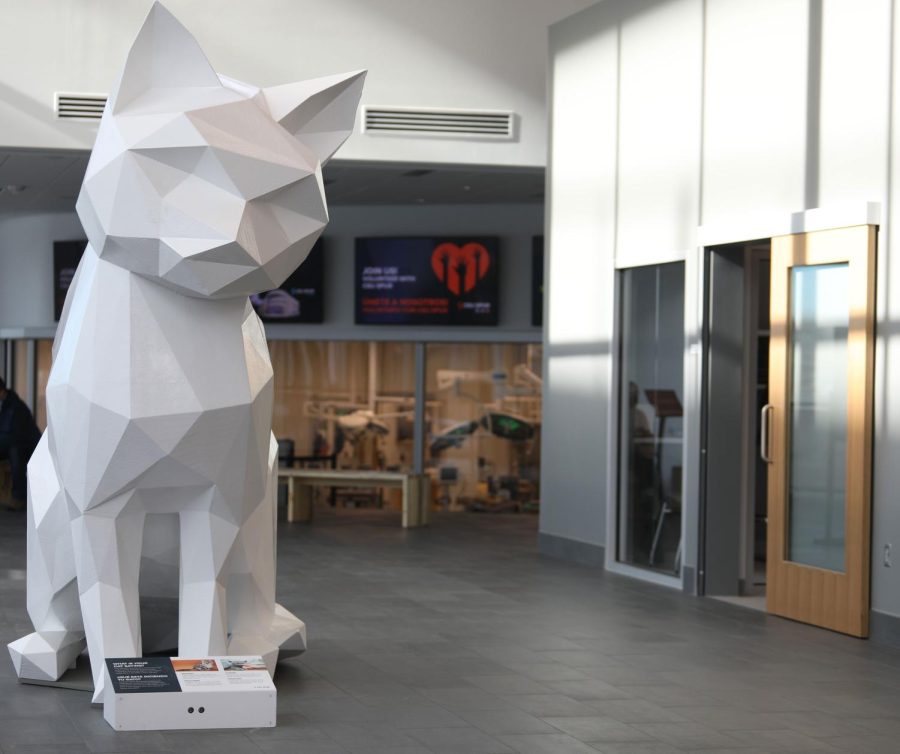
Vida, which is the Spanish word for “life” and is the animal and human health building of the campus, features a Dumb Friends League animal hospital that offers subsidized veterinary care for community members, an Equine Sports Medicine and Rehabilitation Center and a Temple Grandin Equine Center. While each service sees private clients, the building design allows visitors to see veterinary medicine and equine therapy at work from observation windows.
Terra will focus on food and agriculture and will include a vertical garden, rooftop greenhouses, a learning and community kitchen and a food lab, Kennedy said.
Hydro will focus on water, with an outdoor space that overlooks the South Platte River offering opportunities for hands-on water research and a partnership with Denver Water, allowing for a look into their water quality and compliance testing.
Every component of each building comes with specific intentions, and the naming of CSU “Spur” has multiple meanings as well, Kennedy said.
Kennedy said “Spur” refers to the history of the campus location in that the area is part of the spur of a railroad and the historic site of Denver’s National Western Stock Show. Additionally, “Spur” functions as a call to action, representing CSU’s educational mission.
“We want to spur your imagination, spur innovation within this space, spur people’s curiosity,” Kennedy said. “We really want to communicate that this is a place where we’re trying to move things forward and kind of be a catalyst for students who visit and visitors just in general.”
The Globeville and Elyria-Swansea neighborhoods are some of Denver’s most diverse communities, according to History Colorado, and their histories revolve largely around industrial smelting and meatpacking plants, along with stockyards and major railroad lines.
Where the Vida building currently stands used to be home to a Swift and Company meatpacking plant, Kennedy said, and the intersecting railroads — which were active until a few years ago — sat behind the buildings and underneath the bridge that connects the Terra and Hydro buildings.
The current location of the National Western Complex has been active since Denver’s first National Western Stock Show in 1906, and the agricultural legacy of the Stock Show ties into CSU’s land-grant mission. A spur is a metal tool worn on riding boots used to guide an animal in a certain direction, giving CSU Spur’s name another connection to its mission and history.
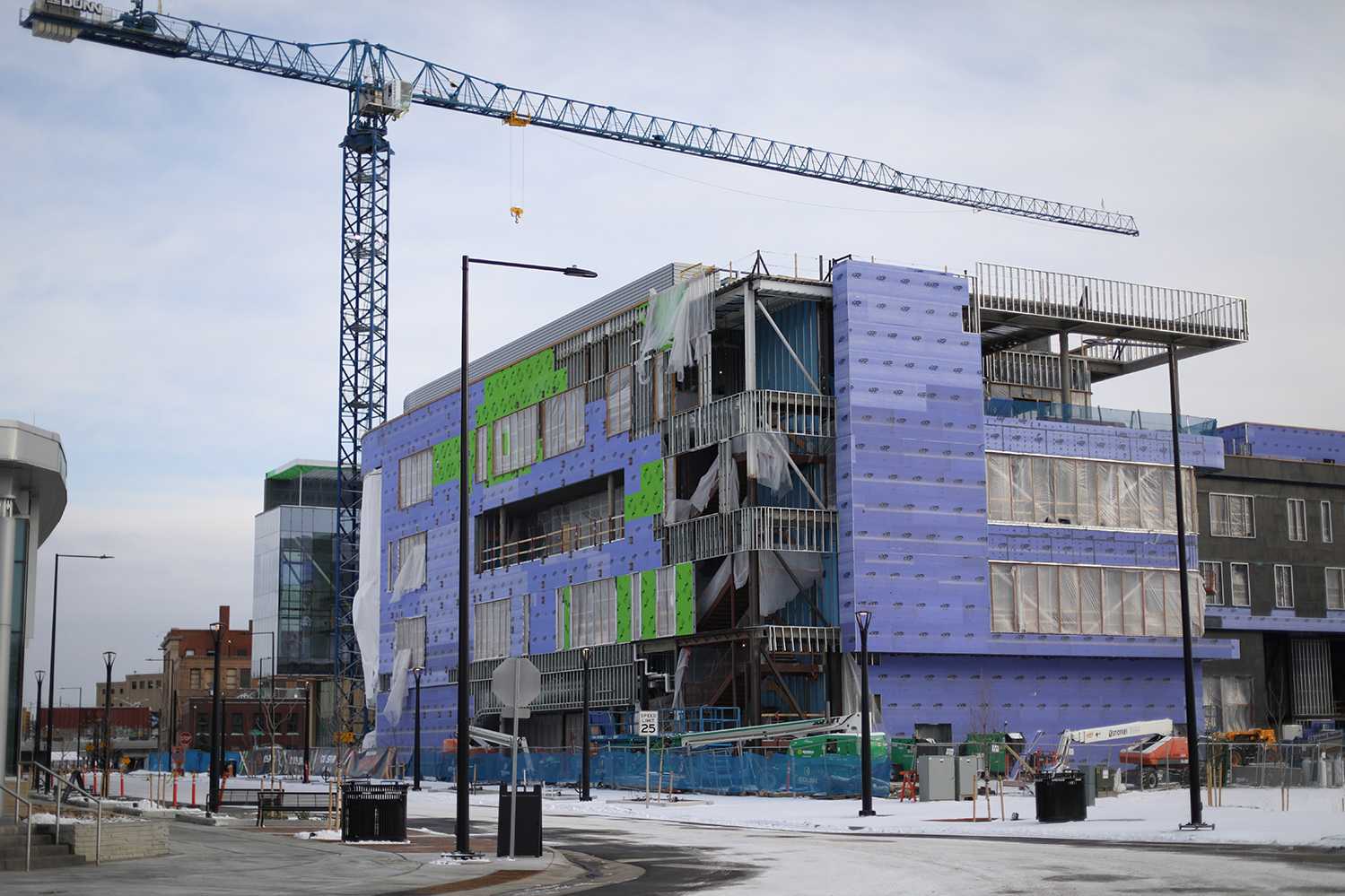
Collegian | Serena Bettis
The Hydro building on the Colorado State University Spur campus will be the last of the three buildings to open to the public.
‘Next generation of professionals’: CSU Spur’s education mission
Colorado’s ag school has not forgotten its roots, and it’s now bringing agricultural education into the urban environment.
The driving force of Spur, the Colorado State University System’s new three-building campus in Denver, is what CSU System Chancellor Tony Frank calls “agricultural literacy.”
“As fewer and fewer people are around farms, where does food come from?” Frank said. “How do we balance water between the agricultural needs of our population to grow food and the growing needs of an urban area?”
Sharing the answers to those questions is a good example of what Spur’s food, water and health theme is all about, but the educational mission goes much further than that.
“What we are really trying to do at Spur is create the next generation of professionals,” Spur Director of Education Kathryn Venzor said. “Professionals in a multitude of fields. So we’ve got scientists; we’ve got agriculturalists; we’ve got veterinarians, … really trying to expose our youngest people to those professions and the professionals.”
“We should always want people to be able to make the most of their opportunities, and I think Spur can help do that. And I think if we do it enough times, odds are, you’re going to get some things that are world changing or at least part of the world-changing process.” –Tony Frank, CSU System chancellor
Spur’s programming is geared toward K-12 students, but everyone involved stresses how it really is meant to be a place for everyone: someone looking for a career change, someone who never went to college but might be interested someday or even just someone who wants to learn and engage with a new topic.
The design of Spur allows visitors to get a first-hand look into real work community members are doing through educational exhibits, hands-on learning and observation windows.
All three buildings have windows into everything: the Vida building looks into the Dumb Friends League animal hospital so visitors can watch live surgeries; the Terra building will house a commercial kitchen with a wall of windows showing food service and preparation processes; and the Hydro building will show researchers from Denver Water as they study water quality.
Venzor said Spur is about more than showing students career possibilities and is allowing them to directly interact with professionals in those fields, to understand what schooling they went through and what got them excited about their work in the first place.
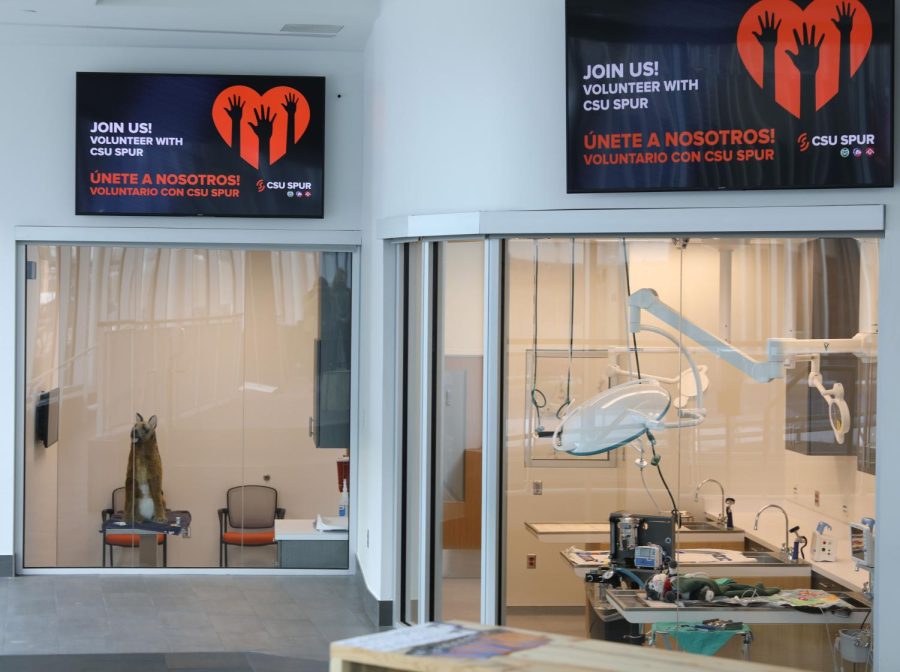
Jocelyn Hittle, assistant vice chancellor for the CSU Spur campus and special projects, said Spur gives “the opportunity to engage with young people and helping them to see careers and educational pathways that they might not be considering right now,” particularly in the areas of food, water and health.
The drive to put forth an institution focused on public, unrestricted agricultural education comes from CSU’s land-grant mission and the need to bring attention to issues facing rural Colorado.
“The reason is that CSU Spur is supposed to be — is designed to be — a place for everyone. Whether you’re able to come through our doors or if you’re able to stream with us virtually, you’ll get as close to the same experience as we can generate.” –Kathryn Venzor, CSU Spur director of education
“There were a lot of discussions in that time period about how rural Colorado could make urban Colorado understand more of the issues they were facing,” Frank said. “I would have said in retrospect that was some of the early discussion around the urban-rural divide, (but) I don’t think we called it that back then; I don’t think we recognized what a schism that was going to be in American society.”
Frank said he believes it’s important for people from urban and rural communities to better understand each other, and one of the best ways to do that is to interact as a group.
“I think from the rural Colorado perspective, having urban kids understand rural issues — how food is produced, how water is utilized, what sustainability looks like in a farm setting — are really important goals,” Frank said.
To do this, CSU created an immersive, accessible campus that connects students and visitors directly with the material they’re learning about. The education programs at Spur also put an emphasis on doing work in the community and not just waiting for people to come to them.
Schools can take field trips to Spur, with CSU providing transportation-cost reimbursement to qualifying schools. If educators want to work with Spur to create extended programs for their classes, all they need to do is reach out and explore the possibilities with Spur’s education team, Venzor said.
For classes that cannot travel to Denver, the Spur team is building a virtual program to bring their educational experience to anyone across the state or beyond.
“The reason is that CSU Spur is supposed to be — is designed to be — a place for everyone,” Venzor said. “Whether you’re able to come through our doors or if you’re able to stream with us virtually, you’ll get as close to the same experience as we can generate.”
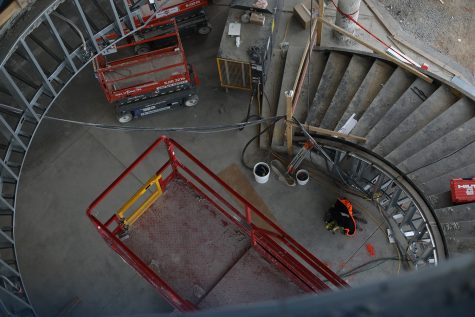
Venzor said her team is working on technology so they will be able to go into the veterinary hospital and stream live video of a surgery, allowing students and teachers to ask the veterinarians questions directly and get the same level of exposure to the work that is possible at the physical location.
Both Venzor and Frank said they are also looking at ways to make educational virtual programs for students in rural Colorado school districts who have four-day weeks. Venzor said this is meant to fill a gap in these students’ education and reach more people who can work through issues in food, water and health.
“We are dedicated to diversifying our fields, our professional fields in all of these areas, and we can’t do that if we’re not accessing as many people as possible and making our programs accessible,” Venzor said.
Frank said the immersive aspect of Spur’s programming is another important piece, as studies show students learn better when they’re motivated and interested and that interest comes when they can see an application of the material they’re learning.
At the ribbon cutting ceremony for Spur’s first building, Vida, on Jan. 7, Frank gave a hypothetical situation of someone who discovers a new passion through Spur, ultimately leading them to change the world, and he reiterated his point that the hope is to inspire people and show them the possibilities of what they can achieve or discover.
“We should always want people to be able to make the most of their opportunities, and I think Spur can help do that,” Frank said. “And I think if we do it enough times, odds are, you’re going to get some things that are world changing or at least part of the world-changing process.”
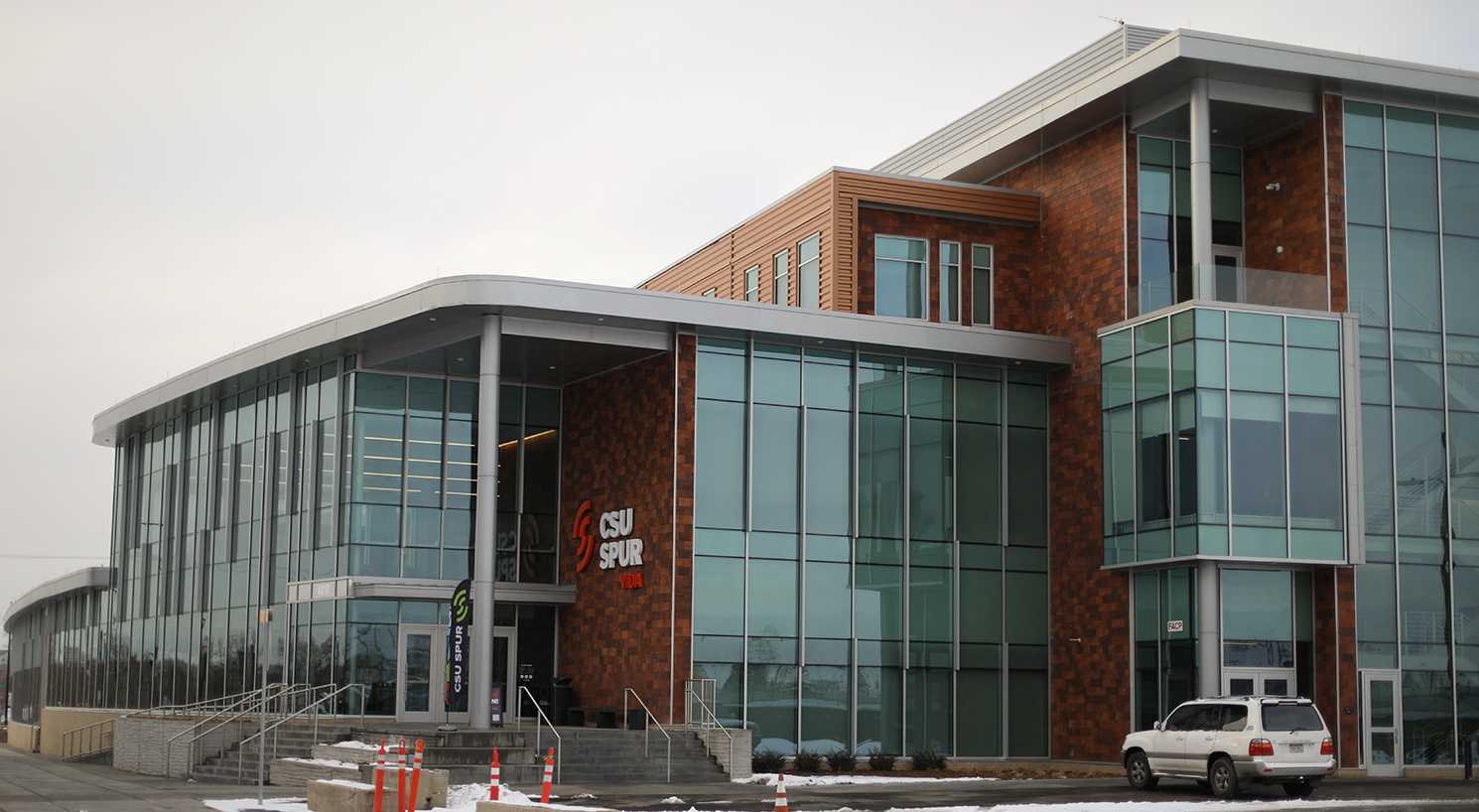
Collegian | Serena Bettis
The Vida building at the Colorado State University Spur campus is open to the public six days a week, Feb. 23, 2022. The Spur campus will have three buildings total, each dedicated to a different field of study.
Expanding the CSU brand: How Spur came to Denver
It started with a need, and now, it looks to fulfill its mission by meeting the needs of its community: the state of Colorado.
Fourteen years ago, the National Western Stock Show needed new, updated facilities. The City of Denver needed the National Western Stock Show to stay in the city. The Colorado State University System needed a way to reach more Coloradans and expand into the capital.
This is how CSU Spur came to be.
Tony Frank, the current CSU System chancellor and former president of CSU’s Fort Collins campus, said the first conversations about bringing a physical CSU campus to Denver started around 2008 as the National Western Stock Show looked to move away from its historic location between the Globeville and Elyria-Swansea neighborhoods of Denver and closer to the Denver International Airport.
The proposal would have included building a space for the Stock Show next to the Gaylord Rockies Resort & Convention Center, which opened in 2018, and had the potential to hurt downtown Denver’s economy, according to The Denver Post.
“(For) years, as long as I can remember, we’ve been trying to find a way to highlight the CSU brand in Denver,” Frank said. “In the state capital, major metropolitan area, all these things, and yet it didn’t seem to us like building another bricks and mortar campus with lecture halls and dorms; that didn’t seem like the right thing to do.”
“The idea to redevelop the area and make it a year-round hub for all these activities and education — … that’s really how the conversations began with CSU.” -Tiana Kennedy, CSU System assistant vice chancellor of external relations
Frank said there did not seem to be a need for another traditional university in the Denver area — after all, the Denver metropolitan area is home to multiple universities and community colleges, both public and private. The System passed on the first opportunity of a location partnership with the National Western Stock Show, Frank said, but the possibility came up again a few years later.

Both Frank and Tiana Kennedy, the CSU System’s assistant vice chancellor of external relations, said Denver Mayor Michael B. Hancock convened a blue-ribbon panel to evaluate the possibilities of keeping the stock show in Denver. In 2011, the stock show brought five business proposal options to Denver officials, according to an article in The Denver Post.
The National Western Center Master Plan was officially adopted in 2015 and put together by the Western Stock Show Association, the CSU System, the City and County of Denver, History Colorado and the Denver Museum of Nature & Science, according to the National Western Center’s website.
“The idea to redevelop the area and make it a year-round hub for all these activities and education — … that’s really how the conversations began with CSU,” Kennedy said.
At the same time, Frank said CSU needed a way to up their enrollment and inform more people about their new program, called the Commitment to Colorado, a scholarship opportunity for Colorado residents to attend CSU with fully paid tuition and fees.
Frank explained CSU realized no one really knew about the program, and they needed to adjust their messaging about it. Additionally, Frank referenced studies showing “of first-generation kids who didn’t go to college, their parents generally made the decision somewhere around late junior high that college was unaffordable.”
With so much discussion around high student loan debt and the rising cost of higher education, Frank said many people hear those conversations and believe there is not an affordable path to college. CSU wanted to disrupt that cycle.
“All those things came together for us to say, … ‘What if our goal was to get people really excited about education and understand — and get the message back home to their parents — that there is a pathway to college?’” Frank said. “(That) despite what you’re hearing about the cost and about debt, there is a way to get there.”
The CSU Spur campus funding came from city and state expenditures already in place at the time of the Master Plan proposal.
Part of the funding came from Measure 2C on Denver’s November 2015 ballot, which asked to extend indefinitely a 1.75% lodger’s tax on hotel rooms and rental cars in the area and was originally approved in 1999, according to Ballotpedia. The measure specifically stated the extension would allow for the National Western Center project and provide “locations for new Colorado State University agriculture-related academic buildings on the National Western Center.” According to an editorial in The Denver Post, the lodger’s tax funded $476 million of the first two phases of the NWC project.
The other part of the funding came from a certificate of participation granted by the Colorado General Assembly through House Bill 15-1344, approved by former Gov. John Hickenlooper in May 2015. Henry Sobanet, chief financial officer for the CSU System, said the funds granted by the COP were previously being used to pay off a prison built by the state, and as that came to an end, the legislature authorized another issuance of the bond. This means the legislature created a new round of debt from the state’s general fund, so financing the campus did not add to state spending.
“Your presence there shouldn’t just add value to you; it should really add value to the people who live around you and your new neighbors.” -Tony Frank, CSU System chancellor
The COP will provide up to $250 million — $200 million for Spur facilities and $50 million for the Fort Collins campus, Sobanet said — across 20 years, according to the bill.
Funds are appropriated annually by the CGA, which allows the CSU Board of Governors to “expend money from the trust fund to make lease payments payable under the terms of lease-purchase agreements” authorized in the bill.
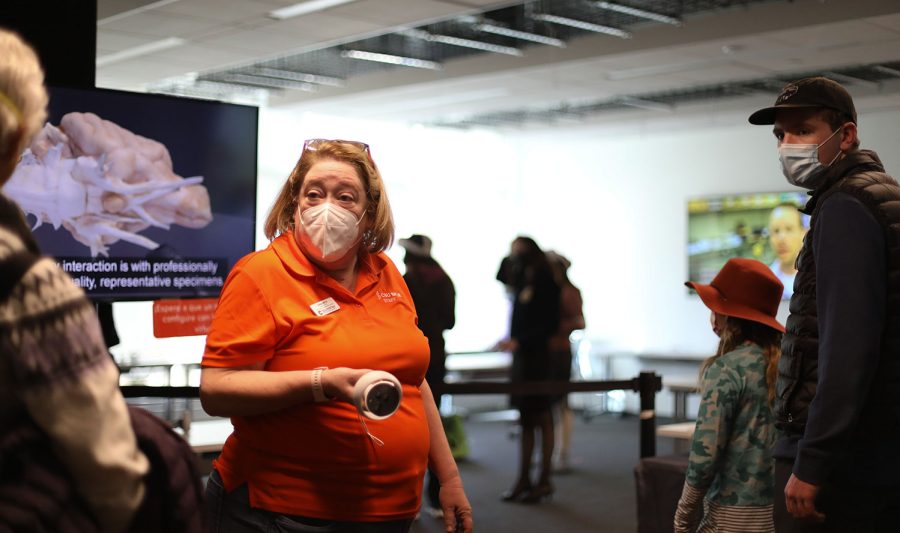
While looking to build a campus for “all of Colorado,” as Frank said at the Vida building ribbon-cutting ceremony Jan. 7, CSU realized they had more work to do in the immediate community around the National Western Center.
The Globeville and Elyria-Swansea neighborhoods are some of Denver’s oldest and most neglected areas. The intersection of Interstate 25 and Interstate 70 splits Globeville into four sections. The road construction and history of smelting in the area has poisoned the air and soil with lead in Elyria-Swansea and Globeville.
With million-dollar development proposals and neighborhood revitalization efforts across Denver, gentrification worries residents, and the National Western Center has only added to those concerns.
Kennedy said CSU recognizes this and is working with the community to ensure the Spur campus does not cause more harm than good. CSU tries to hire locally and reach out to organizations in the community so they can be effective partners and not replicate services, and they compensate people for their time when asking for advice and feedback.
To be a good partner, Frank said CSU aims to be an “anchor institution” in the area, a term that says big institutions should not just go into a community to benefit themselves but should work to really be a part of the community, buying local products and hiring local residents, Frank said.
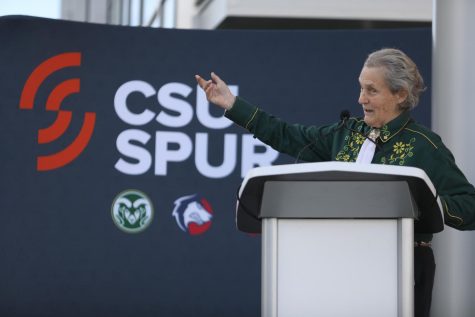
“Your presence there shouldn’t just add value to you; it should really add value to the people who live around you and your new neighbors,” Frank said.
Jocelyn Hittle, assistant vice chancellor for the CSU Spur campus and special projects, said part of being a good partner is being responsive to the community’s wishes.
To do this, CSU created the Spur Scholarship specifically for high school students from the 80216 zip code, which encompasses Globeville and Elyria-Swansea. The scholarship funds students who have lived in the area for at least two years and are in good academic standing up to $10,000 upon admittance to a CSU institution.
“The work is not done, and it won’t be done,” Kennedy said. “We have to continue to be good neighbors; we have to continue to show up; we have to continue to listen.”
Reach Serena Bettis at news@collegian.com or on Twitter @serenaroseb.
